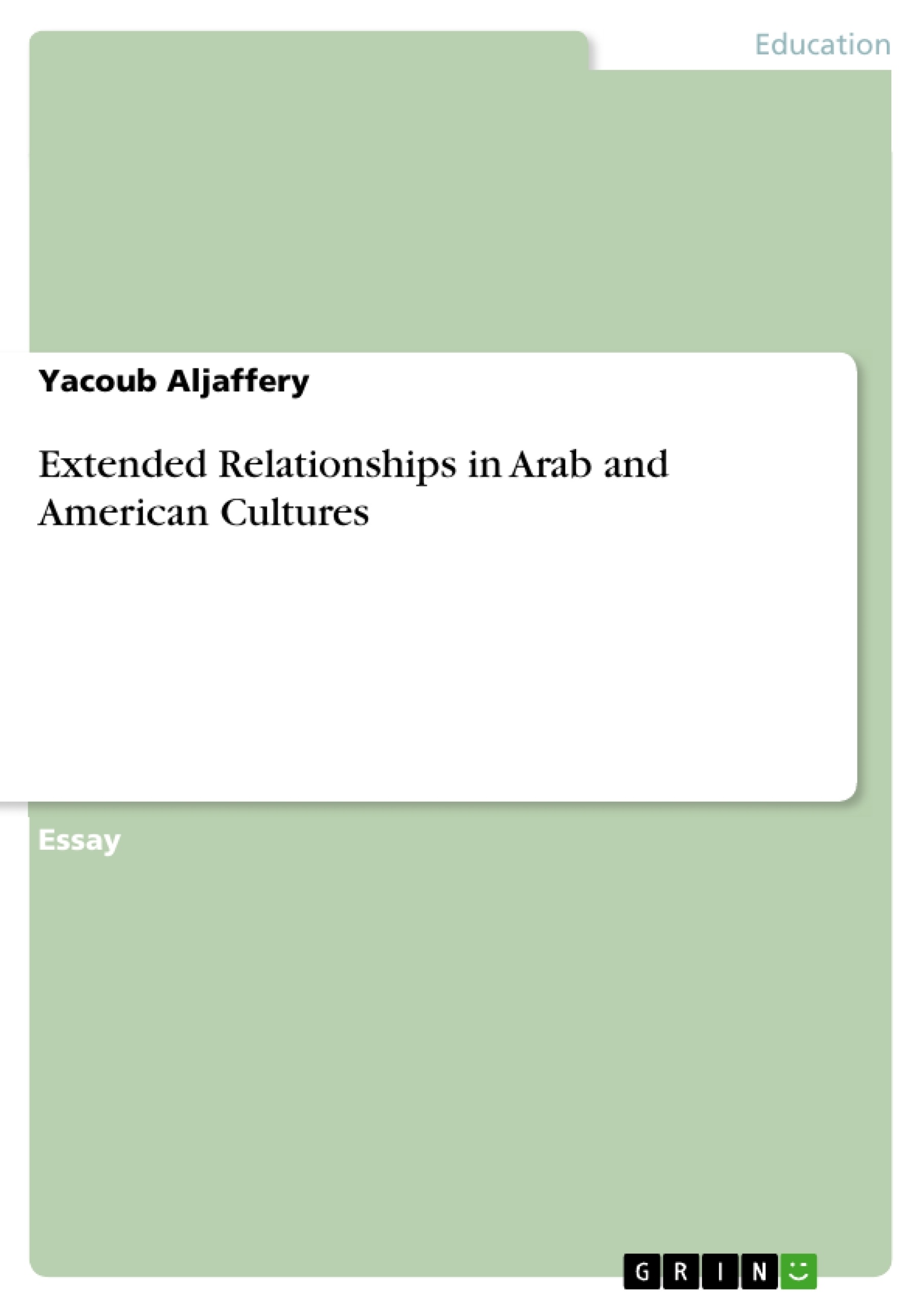Relationships are a part of everyday life. Regardless of culture or ethnicity, relationships between people can be seen across the globe. It is a defining characteristic of the human race. However, there are specifics on how these relationships are formed and to what extent. There are unspoken rules that govern everything from how people greet each other to the roles that they play in society. Although the Arab people share the same culture, there are differences within the culture from country to country. In this paper, we will concentrate on similar Arab practices in neighbor relationships and student and teacher relationships in the Gulf region and in northern Africa, specifically Sudan. These customs will then be compared to the parallel relationships found in America.
Inhaltsverzeichnis (Table of Contents)
- Relationships among neighbors
- Greetings
- Visits among neighbors
- Welcoming new neighbors
- Relationships between students and teachers
- Student behavior
- Teacher behavior
- Teacher expectations
Zielsetzung und Themenschwerpunkte (Objectives and Key Themes)
This paper explores the nuances of extended relationships in Arab and American cultures, focusing on the social interactions and customs that define these connections. It aims to highlight the differences and similarities in how these relationships are cultivated and maintained in both cultural contexts.
- The importance of extended relationships in Arab culture
- The role of greetings and hospitality in fostering social bonds
- The contrasting approaches to neighborly interactions in Arab and American societies
- The influence of cultural norms and religious practices on social behavior
- The significance of community and neighborly support in both cultures
Zusammenfassung der Kapitel (Chapter Summaries)
This section focuses on the main themes, arguments, or narrative elements of each chapter. It excludes summaries of the conclusion, final chapter, or any sections containing major revelations or spoilers. Aim for consistency in the level of detail provided for each chapter.
The first chapter examines the concept of extended relationships in the Arab world, particularly in the Gulf region and North Africa. It emphasizes the strong social bonds, the significance of neighborly interactions, and the importance of hospitality in these cultures. The chapter then contrasts these practices with those observed in American society, highlighting the differences in greeting customs, neighborly visits, and the overall emphasis on social engagement.
The second chapter delves deeper into the specifics of extended relationships in different Arab countries, providing examples of how neighbors greet each other, the nature of their visits, and the customs involved in welcoming new residents. It also explores the influence of religion and cultural variations on these practices, showcasing examples from Iraq, Saudi Arabia, and Sudan.
Schlüsselwörter (Keywords)
This paper explores the key themes of extended relationships, cultural differences, social interactions, and hospitality. It examines the practices and customs that shape neighborly relationships in both Arab and American cultures. The paper also delves into the influence of religious beliefs and cultural norms on social behavior, providing insights into the contrasting approaches to community engagement in both societies.
- Citar trabajo
- Yacoub Aljaffery (Autor), 2010, Extended Relationships in Arab and American Cultures, Múnich, GRIN Verlag, https://www.grin.com/document/289083



